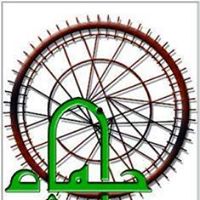اشترك بالحزمة الذهبية واحصل على وصول غير محدود شمرا أكاديميا
تسجيل مستخدم جديدList Learning with Attribute Noise
118
0
0.0
(
0
)
اسأل ChatGPT حول البحث

ﻻ يوجد ملخص باللغة العربية
We introduce and study the model of list learning with attribute noise. Learning with attribute noise was introduced by Shackelford and Volper (COLT 1988) as a variant of PAC learning, in which the algorithm has access to noisy examples and uncorrupted labels, and the goal is to recover an accurate hypothesis. Sloan (COLT 1988) and Goldman and Sloan (Algorithmica 1995) discovered information-theoretic limits to learning in this model, which have impeded further progress. In this article we extend the model to that of list learning, drawing inspiration from the list-decoding model in coding theory, and its recent variant studied in the context of learning. On the positive side, we show that sparse conjunctions can be efficiently list learned under some assumptions on the underlying ground-truth distribution. On the negative side, our results show that even in the list-learning model, efficient learning of parities and majorities is not possible regardless of the representation used.
قيم البحث
اقرأ أيضاً
We study efficient PAC learning of homogeneous halfspaces in $mathbb{R}^d$ in the presence of malicious noise of Valiant~(1985). This is a challenging noise model and only until recently has near-optimal noise tolerance bound been established under t
he mild condition that the unlabeled data distribution is isotropic log-concave. However, it remains unsettled how to obtain the optimal sample complexity simultaneously. In this work, we present a new analysis for the algorithm of Awasthi~et~al.~(2017) and show that it essentially achieves the near-optimal sample complexity bound of $tilde{O}(d)$, improving the best known result of $tilde{O}(d^2)$. Our main ingredient is a novel incorporation of a matrix Chernoff-type inequality to bound the spectrum of an empirical covariance matrix for well-behaved distributions, in conjunction with a careful exploration of the localization schemes of Awasthi~et~al.~(2017). We further extend the algorithm and analysis to the more general and stronger nasty noise model of Bshouty~et~al.~(2002), showing that it is still possible to achieve near-optimal noise tolerance and sample complexity in polynomial time.
This paper is concerned with computationally efficient learning of homogeneous sparse halfspaces in $mathbb{R}^d$ under noise. Though recent works have established attribute-efficient learning algorithms under various types of label noise (e.g. bound
ed noise), it remains an open question when and how $s$-sparse halfspaces can be efficiently learned under the challenging malicious noise model, where an adversary may corrupt both the unlabeled examples and the labels. We answer this question in the affirmative by designing a computationally efficient active learning algorithm with near-optimal label complexity of $tilde{O}big({s log^4 frac d epsilon} big)$ and noise tolerance $eta = Omega(epsilon)$, where $epsilon in (0, 1)$ is the target error rate, under the assumption that the distribution over (uncorrupted) unlabeled examples is isotropic log-concave. Our algorithm can be straightforwardly tailored to the passive learning setting, and we show that the sample complexity is $tilde{O}big({frac 1 epsilon s^2 log^5 d} big)$ which also enjoys the attribute efficiency. Our main techniques include attribute-efficient paradigms for instance reweighting and for empirical risk minimization, and a new analysis of uniform concentration for unbounded data -- all of them crucially take the structure of the underlying halfspace into account.
We study {em online} active learning of homogeneous halfspaces in $mathbb{R}^d$ with adversarial noise where the overall probability of a noisy label is constrained to be at most $ u$. Our main contribution is a Perceptron-like online active learning
algorithm that runs in polynomial time, and under the conditions that the marginal distribution is isotropic log-concave and $ u = Omega(epsilon)$, where $epsilon in (0, 1)$ is the target error rate, our algorithm PAC learns the underlying halfspace with near-optimal label complexity of $tilde{O}big(d cdot polylog(frac{1}{epsilon})big)$ and sample complexity of $tilde{O}big(frac{d}{epsilon} big)$. Prior to this work, existing online algorithms designed for tolerating the adversarial noise are subject to either label complexity polynomial in $frac{1}{epsilon}$, or suboptimal noise tolerance, or restrictive marginal distributions. With the additional prior knowledge that the underlying halfspace is $s$-sparse, we obtain attribute-efficient label complexity of $tilde{O}big( s cdot polylog(d, frac{1}{epsilon}) big)$ and sample complexity of $tilde{O}big(frac{s}{epsilon} cdot polylog(d) big)$. As an immediate corollary, we show that under the agnostic model where no assumption is made on the noise rate $ u$, our active learner achieves an error rate of $O(OPT) + epsilon$ with the same running time and label and sample complexity, where $OPT$ is the best possible error rate achievable by any homogeneous halfspace.
This chapter considers the computational and statistical aspects of learning linear thresholds in presence of noise. When there is no noise, several algorithms exist that efficiently learn near-optimal linear thresholds using a small amount of data.
However, even a small amount of adversarial noise makes this problem notoriously hard in the worst-case. We discuss approaches for dealing with these negative results by exploiting natural assumptions on the data-generating process.
We consider the problem of learning linear classifiers when both features and labels are binary. In addition, the features are noisy, i.e., they could be flipped with an unknown probability. In Sy-De attribute noise model, where all features could be
noisy together with same probability, we show that $0$-$1$ loss ($l_{0-1}$) need not be robust but a popular surrogate, squared loss ($l_{sq}$) is. In Asy-In attribute noise model, we prove that $l_{0-1}$ is robust for any distribution over 2 dimensional feature space. However, due to computational intractability of $l_{0-1}$, we resort to $l_{sq}$ and observe that it need not be Asy-In noise robust. Our empirical results support Sy-De robustness of squared loss for low to moderate noise rates.
الأسئلة المقترحة
سجل دخول لتتمكن من نشر تعليقات
التعليقات
جاري جلب التعليقات


سجل دخول لتتمكن من متابعة معايير البحث التي قمت باختيارها


